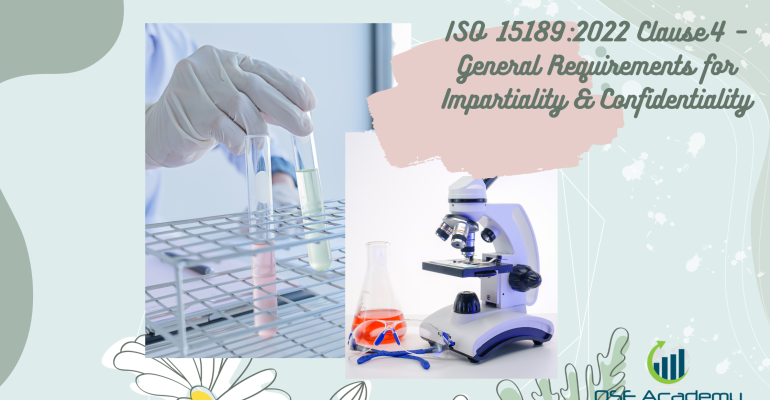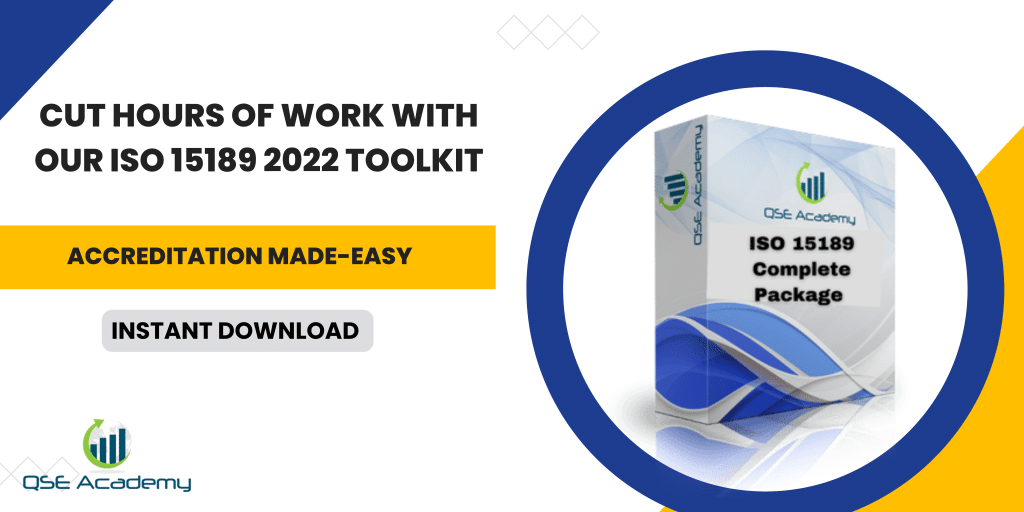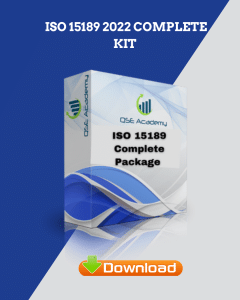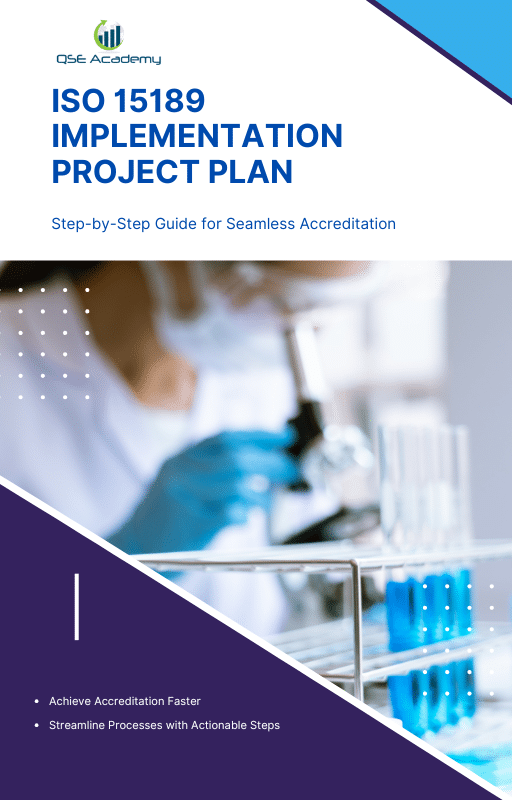ISO 15189:2022 Clause 4 – General Requirements for Impartiality & Confidentiality

ISO 15189:2022 Clause 4 – General Requirements for Impartiality & Confidentiality
Last Updated on October 22, 2025 by Hafsa J.
Why Impartiality and Confidentiality Matter in Medical Laboratories
When I train labs for ISO 15189 accreditation, this is where most teams realize just how much integrity and trust are built into the standard. Clause 4 isn’t paperwork—it’s the foundation of credibility.
Here’s what I’ve noticed: even the most technically skilled labs can lose an assessor’s confidence if impartiality and confidentiality aren’t clearly demonstrated. Auditors don’t just check test accuracy—they look closely at how you handle bias, influence, and information.
By the end of this guide, you’ll know exactly how to:
-
Identify and manage impartiality risks before they become findings.
-
Build airtight confidentiality systems that protect patient data.
-
Demonstrate Clause 4 compliance confidently during assessments.
Understanding ISO 15189 Clause 4 Requirements – Core Expectations
Clause 4 sits right at the heart of ISO 15189:2022—it’s the part that ensures your lab operates with honesty and respect for patient trust. It defines two core obligations: impartiality and confidentiality.
Impartiality means your staff and decisions aren’t swayed by outside influence—commercial, financial, or personal. Confidentiality means that every person in your lab understands their duty to protect sensitive information, from patient results to contract details.
In my experience, most nonconformities here don’t come from bad intent—they come from assumptions. People assume that since everyone is “professional,” there’s no conflict. But auditors want proof.
That’s why ISO 15189 expects you to:
- Identify possible risks to impartiality.
- Evaluate how those risks could affect results.
- Implement actions to eliminate or minimize them.
- Control how information is stored, accessed, and shared.
Pro Tip: Keep an Impartiality and Confidentiality Responsibility Matrix. List who has access to what data and where potential conflicts could occur. It’s a small tool that makes a big difference during audits.
Ensuring Laboratory Impartiality – Practical Controls and Procedures
Impartiality sounds simple, but it’s one of the most misunderstood parts of ISO 15189. In reality, it’s about managing human behavior and business pressures, not just writing a policy.
Here’s what I’ve seen: labs often underestimate how everyday operations can create subtle bias. A manager approving their own test results, or a technician working on samples from their private client—these are small cracks that auditors notice instantly.
To stay compliant and credible, use this 3-step approach:
-
Identify the risks.
Review every role and process where bias could creep in. Look at financial ties, personal relationships, or competing interests. -
Evaluate and control them.
Assign responsibility for reviewing these risks. Create written declarations for staff with potential conflicts of interest. -
Monitor and review regularly.
Impartiality isn’t a “once-a-year” exercise. Make it part of your management review or internal audit schedule.
Pro Tip: Keep an Impartiality Risk Log. Document each identified risk, what action you took, and who verified it. When the assessor asks, you can show real control—not assumptions.
Common Mistake: Many labs talk about impartiality but never show evidence of actions taken. Without documentation, auditors can’t verify that risks are managed.
Protecting Confidentiality – Data Security and Patient Information Control
Confidentiality goes beyond signing an agreement—it’s a daily habit. Clause 4 expects your lab to treat every piece of patient or client information as private, whether it’s written, digital, or spoken.
Here’s what I’ve noticed: many labs focus on data security but overlook the human side of confidentiality. A locked server means nothing if someone casually discusses patient results in the hallway.
Start with these essentials:
-
Access control: Only authorized personnel should access sensitive records or reports.
-
Information handling: Set clear rules for how data is stored, transferred, and destroyed.
-
Agreements: Every staff member, contractor, or visitor who may encounter lab information should sign a confidentiality commitment.
-
Training: Reinforce confidentiality awareness during onboarding and through annual refreshers.
Pro Tip: Use your LIMS (Laboratory Information Management System) to assign access rights based on job roles. Restrict visibility of patient details unless necessary for that person’s task.
Common Pitfall: Many labs forget that confidentiality applies to verbal communication too. Make it part of your internal culture—what’s discussed in the lab stays in the lab.
Integrating Impartiality & Confidentiality into the Management System
Here’s something I’ve learned after guiding dozens of labs—Clause 4 isn’t meant to stand alone. To make it work in real life, you’ve got to weave impartiality and confidentiality into your existing management system.
Think of it as connecting the dots between your policies, risk management, and everyday operations. When auditors review your system, they’re looking for evidence that impartiality and confidentiality aren’t just written down—they’re lived out.
Here’s how to make that happen:
-
Link your procedures.
Your impartiality policy should tie directly into management review, internal audits, and HR onboarding. This shows auditors that controls aren’t isolated. -
Use your risk register.
Include impartiality and confidentiality as recurring risks. Evaluate them regularly and note any incidents or updates in management review minutes. -
Monitor through audits.
Add impartiality and confidentiality checks to your internal audit checklist. This demonstrates ongoing verification.
Pro Tip: During management reviews, have a short standing agenda item titled “Impartiality & Confidentiality Update.” It signals top management involvement—something assessors pay close attention to.
Example: One lab I worked with embedded confidentiality metrics into their KPIs—tracking staff training completion and access rights compliance. It gave their leadership a clear view of both performance and risk.
Demonstrating Compliance During Accreditation Assessments
When it’s audit time, Clause 4 is one of the first areas assessors dig into. They’ll want to see evidence—not promises—of how your lab ensures impartiality and protects confidentiality in daily operations.
Here’s what assessors typically ask for:
-
Signed conflict-of-interest declarations for all key personnel.
-
Confidentiality agreements for staff, contractors, and external parties.
-
Records from management reviews or risk assessments showing impartiality monitoring.
-
Examples of controlled access systems—like LIMS permissions or document security logs.
Pro Tip: Cross-reference every piece of evidence to your quality manual or procedure numbers. For example, “QMP-04: Impartiality Policy” or “PROC-07: Data Security Procedure.” This shows structure and makes your system easy to audit.
Common Mistake: Over-documenting. Some labs create massive binders full of repetitive evidence. Assessors prefer clarity over volume. Focus on records that actually demonstrate implementation, not just intention.
Example: A laboratory I supported passed its first ISO 15189 audit with zero findings in Clause 4 simply because their evidence map linked each document and record to the corresponding clause—saving hours of back-and-forth during the assessment.
Continuous Improvement – Monitoring and Reviewing Impartiality & Confidentiality
Clause 4 doesn’t end once you pass your audit—it’s an ongoing responsibility. The best labs treat impartiality and confidentiality like living processes, not checkboxes.
Here’s what I’ve seen work consistently:
-
Quarterly internal reviews. Use a short checklist to confirm there are no new impartiality risks or confidentiality issues.
-
Incident tracking. Keep a simple log of any breaches or near-misses—like accidental data exposure or potential conflicts of interest.
-
Trend analysis. Review patterns. If the same type of risk keeps showing up, it’s time to strengthen your controls or retrain staff.
Pro Tip: Add “Impartiality and Confidentiality Review” as a recurring item in your management review agenda. This turns it from a compliance task into part of your improvement culture.
Example: One mid-size diagnostics lab noticed recurring confidentiality lapses in client communications. By tracking those incidents, they introduced mandatory email disclaimers and staff refreshers—and reduced issues by 80% within three months.
The point is, continual improvement keeps your lab credible and resilient.
FAQs – ISO 15189 Clause 4 Explained
Q1: What’s the main purpose of Clause 4 in ISO 15189:2022?
Clause 4 exists to make sure your lab operates with integrity and discretion. It’s designed to prevent bias in your results and protect patient or client information from unauthorized access or misuse.
Q2: What documents do auditors look for to confirm impartiality?
They’ll want to see conflict-of-interest declarations, impartiality risk registers, and management review minutes discussing how those risks are evaluated and mitigated.
Q3: How often should confidentiality training be done?
At least once a year—and every time you bring in new staff, update systems, or introduce new partners. Consistent refreshers keep the culture of confidentiality alive.
Q4: Can subcontractors or consultants be covered under the same confidentiality policy?
Yes, but only if they sign confidentiality agreements specific to your lab. Assessors will expect proof that all third parties with access to lab data are formally bound by confidentiality.
Strengthen Trust Through Integrity and Data Protection
Impartiality and confidentiality aren’t just clauses in a standard—they’re what make patients, clients, and accreditation bodies trust your laboratory. When these principles are part of your culture, not just your documentation, your entire system becomes stronger and more respected.
From what I’ve seen, labs that build these habits into everyday routines rarely struggle during audits. They don’t scramble for evidence—it’s already there in their processes, logs, and management reviews.
So, take a step back and ask yourself:
-
Are impartiality risks reviewed regularly?
-
Is every staff member confident about handling confidential data?
-
Do your systems show consistency between policy and practice?
If not, now’s the perfect time to strengthen those areas.
Next Step: Download QSE Academy’s ISO 15189:2022 Implementation Toolkit—you’ll get ready-to-use templates for impartiality declarations, confidentiality policies, and audit checklists to help you prove compliance under Clause 4 with confidence.
Whether it’s ISO 9001, ISO 22000, or the cosmetics-focused ISO 22716, I’ve spent my career I’m not here to call myself an expert—I prefer “enthusiast” because I truly love what I do. When I’m not writing about standards, you’ll probably find me playing Piano 🎹, connecting with people, or diving into my next big project💫. I’m an engineer specialized in the food and agricultural industry
make ISO standards less intimidating and more approachable for everyone.
turning complex jargon into clear, actionable steps that businesses can actually use.
There’s something incredibly rewarding about helping people navigate food safety and quality management systems
in a way that feels simple, practical, and even enjoyable.
I have a Master’s in QHSE management and over 12 years of experience as a Quality Manager
I’ve helped more than 15 companies implement ISO 9001, ISO 22000, ISO 22716, GMP, and other standards
My clients include food producers, cosmetics manufacturers, laboratories, and service companies
I believe quality systems should be simple, useful, and efficient.












